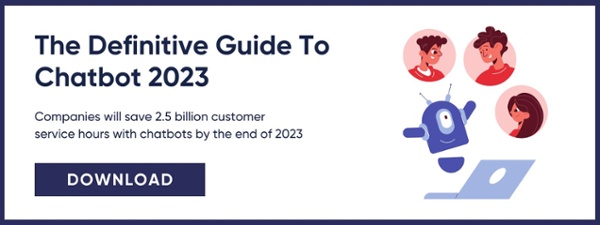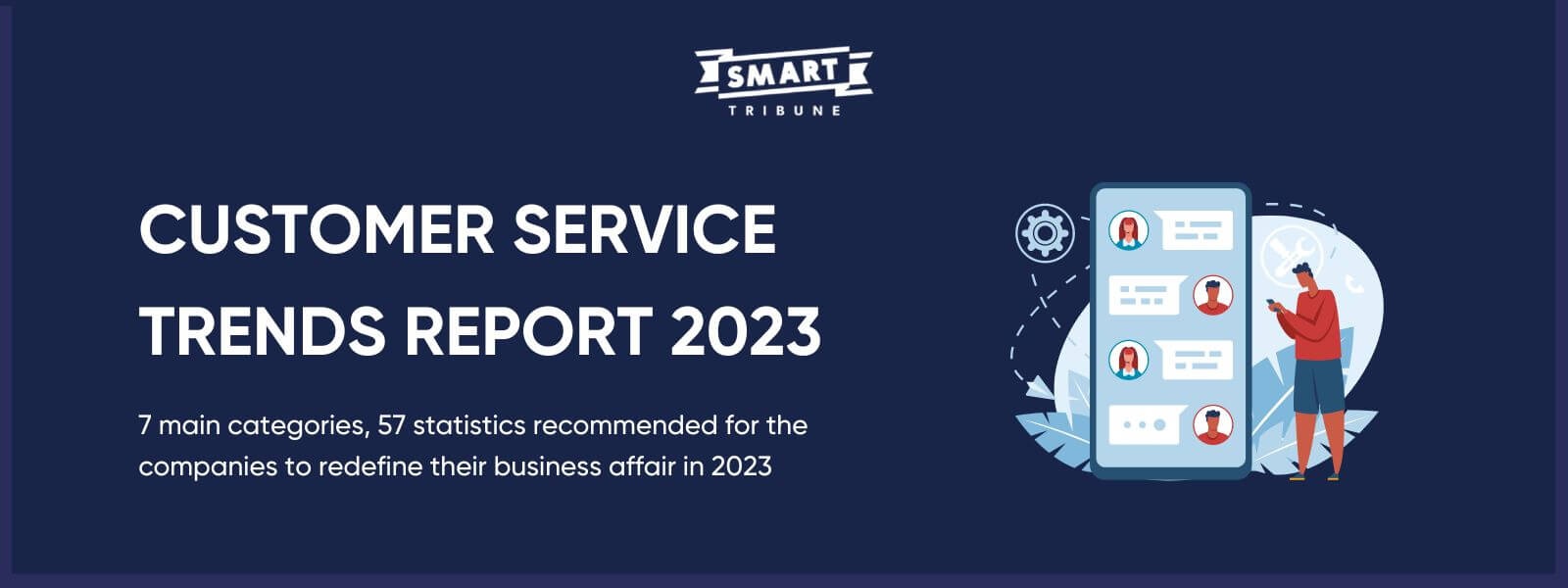
On MAY 31, 2022
Chatbots: The 6 Mistakes That Will Make Your Customers Run Away
Did you know that a chatbot allows companies to save up to 40% of customer service costs? When these customer self-service solutions are efficiently designed and optimized over time, the benefits for your customer service become significant. For your users, this customer relations tool also allows them to be much more autonomous.
But before we get there, we need to avoid errors in design, management and optimization of your chatbot. What are the 6 unforgivable mistakes that will make your customers and prospects run away? The Smart Tribune team answers the question.
Table of content:
1. Deploying a chatbot without a strategy2. Your chatbot provides “too much” information
3. Your chatbot provides information that’s too vague
4. Not giving your chatbot a personality
5. Setting aside time for the continuous improvement of your chatbot
6. Replacing all human assistance with a chatbot

1. Deploying a chatbot without a strategy
Does your brand want to set up a conversational chatbot? Congratulations! You’re ready to interact instantaneously with your customers and you’re already excited about unclogging your customer service, automating requests through chatbot…But before thinking about the tool’s uses and benefits, it’s essential to set up a real chatbot strategy.
First, think about the “why.” What are the reasons pushing you to use a chatbot? Why do you need it? Is it that your users have an appetite for this kind of self-service solution? What will its roles and responsibilities be?
By defining a clear strategy with precise customer relations goals, you will more easily identify which chatbot functionalities to develop. To best structure your chatbot and its knowledge base, the first strategic step is to identify the most common reasons that customers get in touch.
Consider a maximum of hypothetical requests that your chatbot could resolve, which will be validated over time through a test and learn approach, continuously improving your solution. All these scenarios will enrich the conversational potential of your customer self-service solution and respond to the real needs of your customers: This is the first step to plan before deploying an efficient chatbot.
2. Your chatbot provides “too much” information
The main goal of your customer service chatbot is to solve your users’ problems all along their online customer journeys. But in guiding their users in a (too) detailed way, some companies sabotage themselves. Rather than feel guided, the user may end up feeling inundated with useless information…And the consequences are fatal if the chatbot experience pushes away a prospect.
To avoid this catastrophic situation, we advise you to take inspiration from the codes of digital conversations, which you experience in your daily life. Think about dividing long texts into smaller, conversational blocks. Before providing additional information, leave time for the user to respond or interact via “quick reply” buttons which orient and fluidify the conversation for your users’ benefit.
So as to not inundate your customer or prospect, think about leaving them choices throughout their conversation with the bot. Questions like, “Would you like to learn more?” are interesting options that can orient your users to self-service channels that are more appropriate for sharing dense information.
3. Your chatbot provides information that’s too vague
It’s essential to find the right balance in terms of volume of information to deliver. If your bot’s responses are considered too vague by the user, your tool won’t fulfill its mission as a guide, and your users won’t be satisfied…and the abandonment of the customer journey becomes inevitable.
Don’t forget that a chatbot should play the role of advisor and virtual assistant. The responses should be personalized, if possible, taking into account: the customer’s history with the brand, the tracking of a package, opening hours of a nearby store, delivery conditions…Each piece of information should be delivered with precision and will maximize the user experience of your solution.
You can also integrate this self-service solution into the Information System (IS) of your company or your CRM. For example, by referring to a customer’s purchase history indicated in your CRM, you increase your chances of bringing relevant information regarding recommended purchases or order tracking. At stake? Strengthened customer satisfaction!
4. Not giving your chatbot a personality
Among your customer service team, all your employees have different identities and personalities. In stores, customers appreciate being advised by an agent whose name they know. So why should the customer service experience be different online?
To make the conversation as pleasant as possible, we recommend giving your chatbot a name. Most often, brands choose a real first name (and sometimes even a photo or an avatar) to “humanize” the relationship. This practice facilitates the creation of a link and can even boost brand preference.
After naming it, consider defining the personality of your chatbot. This should be coherent with the brand’s image, its positioning and its values. Conversation style will be the means of expressing this personality, so pay attention to the type of language, word choice, expressions, the use formal or informal constructions…All these elements will contribute to the creation of a real story for the chatbot.
That said, be careful not to fall into any behavioral bias. A chatbot that’s too funny can push away customers. Don’t forget: Users are, above all, seeking serious answers to their questions!
5. Setting aside time for the continuous improvement of your chatbot
A chatbot doesn’t just become a perfect self-service tool from one day to the next. Once it’s online, it’s essential to engage in a process of continuous improvement. Testing, iteration and analysis phases and updates need to be planned regularly, to ensure the quality and relevance of delivered information.
To keep improving your chatbot, make listening to your clients your #1 ally. Your role is obviously to analyze the conversations and their success rates but you can also listen to your users and give them a chance to speak. During an exchange, don’t hesitate to ask them if the chatbot’s responses were useful. That way, you’ll more easily identify the points of friction, all while listening to your customers’ opinions.
If you still have doubts about this indispensable step, think about the positive benefits generated by the maintenance of your chatbot: better customer knowledge, improvement of delivered information and of your knowledge bases, and ultimately, a better online experience for your customers, improved predictive behavioral analysis, increased conversion and loyalty rates…The continuous improvement of your chatbot is the motor for its operational efficiency.
6. Replacing all human assistance with a chatbot
We can’t say it enough: The goal of chatbots is not to replace your customer service teams or the human interactions with your customer service agents. An automated solution will never replace human expertise. On the contrary, automation and human expertise go together perfectly when it comes to customer relations.
Customer self-service solutions help to improve customer service, by responding to users’ needs of immediacy and autonomy and by being able to automatically treat up to 70% of level 1 (low value added) requests. Agents can also free up time in order to solve more complex requests, directly with the customers.
Chatbots should be considered “assistants,” here to improve human performance, not to substitute it. When necessary, think about redirecting your users to your customer services (livechat, téléphone, web-call back, email).
Would you like to improve your user service while unclogging your customer service? The chatbot is a customer self-care solution to leverage…if (and only if) it’s designed intelligently and optimized regularly. If you avoid these 6 mistakes, your clients will thank you. And you can get started today. Ready to discover our solutions?



.png)



